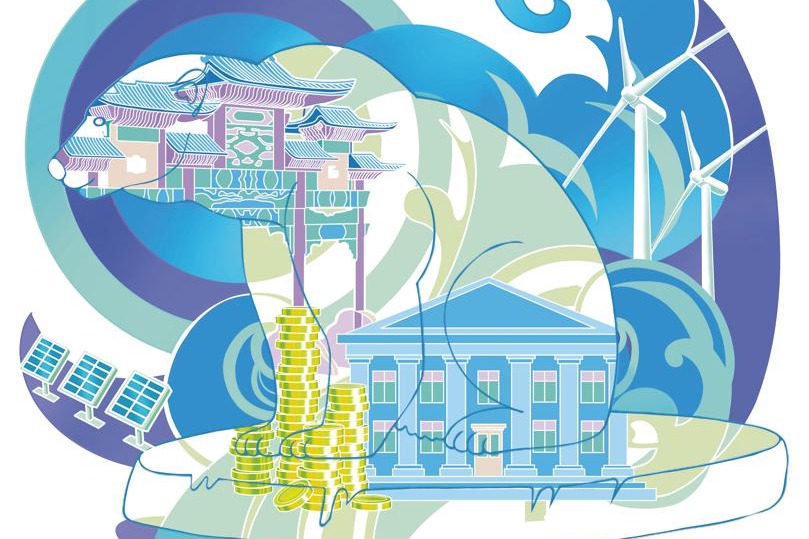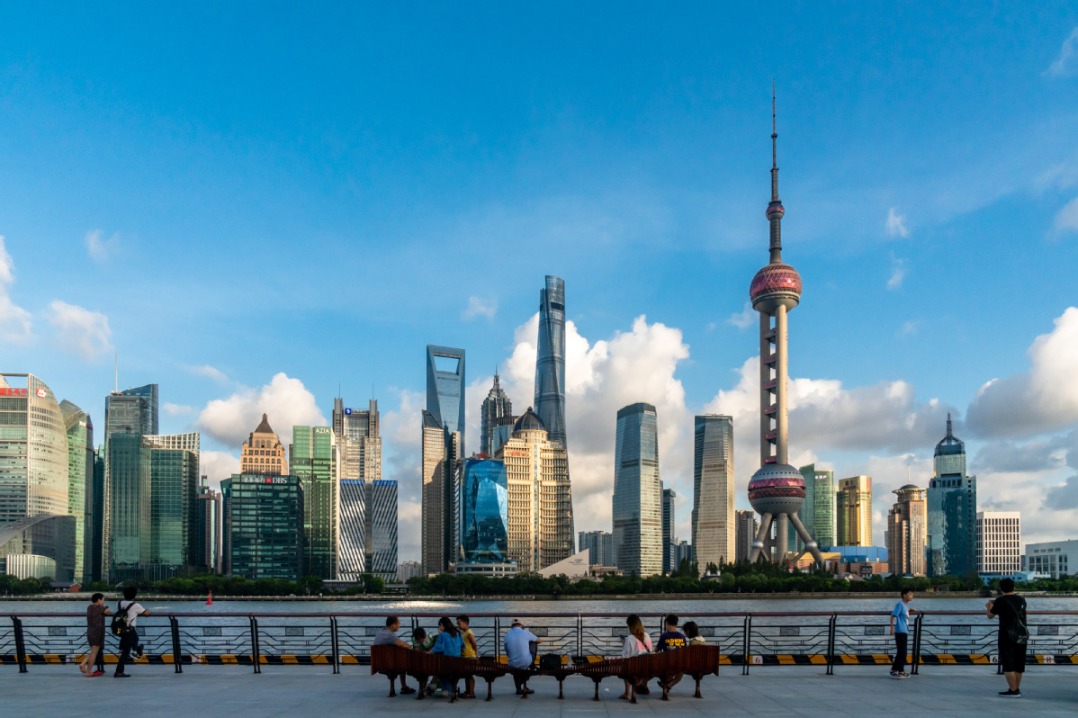Eye on Central Asia


Despite more challenges following the new regional changes, China and Eurasian countries will still have broad prospects in economic cooperation
The geopolitical competition among major powers in the Eurasian region is intensifying. After the outbreak of the Ukraine crisis, the West tried to comprehensively weaken or curb Russia's already existing and China's expanding influence in Eurasia. On the one hand, the United States and Europe fully support Kazakh President Kassym-Jomart Tokayev's reform measures while constantly tarnishing the Belt and Road Initiative as a tool creating debt traps for Central Asian countries.
On the other hand, the US and Europe continue to infiltrate the Caucasus region, providing military equipment and security commitments to relevant countries while intervening in the negotiation process between Armenia and Azerbaijan, posing long-term perils to the region's stability. Countries in this region are thus forced to maintain a balance between Europe, the US, Russia, Turkiye and China, which makes regional cooperation increasingly complicated.
The abundant energy and mineral resources in the Eurasian region, as well as the development of alternative trade routes such as the Middle Corridor, is what makes the region attractive to Western powers. In 2023, multiple "European Union-Central Asia" summits were held between Central Asian countries and the European Union. On French President Emmanuel Macron's historic visit to Kazakhstan, the two sides signed commercial agreements in the fields of nuclear energy, minerals and aerospace. The US elevated the C5+1 dialogue mechanism with Central Asian countries (namely Kazakhstan, the Kyrgyz Republic, Tajikistan, Turkmenistan and Uzbekistan) to the level of heads of state and proposes to support and expand the US-Central Asia partnership after hastily withdrawing troops from Afghanistan. The US and Europe are also actively taking more measures to leverage their "soft power", including providing educational scholarships and supporting civil society groups for the future leaders in Central Asia.
The impact of the Russia-Ukraine conflict and the Western economic sanctions on Eurasian economic cooperation have prompted countries in the region to seek diversified development of geoeconomic relations, among which trade with China has seen rapid growth in the short term. In 2023, the trade volume between China and Central Asian countries increased by 27 percent year-on-year, reaching $89 billion. China has expanded its trade with almost all Central Asian countries, except Turkmenistan (with which trade has decreased by 5 percent), surpassing Russia to become the largest trading partner of Central Asian nations.
Not only is the bilateral trade volume growing rapidly, but the forms of economic cooperation are also changing. China has shifted its focus from primarily exploiting natural resources in Central Asia to investing more proactively in long-term projects. The first China-Central Asia Summit announced the official establishment of a ministerial level meeting mechanism for diplomacy, economy, trade, customs and other areas, upgraded bilateral investment agreements, launched the China-Kyrgyzstan-Uzbekistan railway project, supported the Trans-Caspian International Transport Route plan, established the China-Central Asia energy development partnership, and announced an investment and assistance plan worth $3.8 billion to Central Asia. At present, there are more than 3,000 Chinese enterprises in Kazakhstan, and the two countries are jointly advancing 40 plus projects.
In view of the Eurasian countries' strong demand for infrastructure development and economic growth, the BRI has gradually garnered confidence in this region. Georgia was one of the first countries to support the initiative and sign a free trade agreement with China. In July 2023, China and Georgia upgraded their relations to a strategic partnership, and the two governments signed the cooperation plan of jointly building the Belt and Road. Azerbaijan attaches great importance to the plan — building transportation and energy corridors connecting Europe and Asia, as well as the stable growth demand from China. In July, Azerbaijan and China issued a joint statement on establishing a strategic partnership, in which China expressed its willingness to actively participate in the construction and use of the Middle Corridor and jointly promote the uninterrupted operation of the Southern Corridor of China-Europe freight trains.
Meanwhile, China is also negotiating large-scale green energy projects with Uzbekistan. It has built two solar power plants in Uzbekistan, each with an installed capacity of 500 megawatts. Chinese auto brand BYD, the world's largest electric vehicle manufacturer, will also establish a factory in Uzbekistan with an annual production capacity of 300,000 cars. In 2023, China opened 854 new enterprises in Uzbekistan, which was twice as many as in 2022. In the South Caucasus, following the Armenia-Azerbaijan war and the continuous impact of the Russia-Ukraine conflict, Georgia, Armenia and Azerbaijan regard China as an important direction in which to diversify their foreign policies. The economic and trade ties between China and the three countries in the South Caucasus have also developed rapidly. In 2023, China's trade volume with Georgia, Armenia and Azerbaijan all saw significant year-on-year growth, rising 48 percent, 44 percent and 21 percent respectively.
Following the new regional changes, China and Eurasian countries will face more challenges in their economic cooperation, but the cooperation between the Eurasian economy and the BRI still have broad prospects. The Agreement on Economic and Trade Cooperation Between China and the Eurasian Economic Union is a prime example. Officially signed in 2018, it has expanded into a webinar of subset agreements overarching inter-departmental cooperation, customs management, competition, technology supervision, sanitary and phytosanitary measures, intellectual property protection, e-commerce, national procurement, domestic market protection measures, and other issues. New forms of cooperation have also been proposed based on industries, including joint investment projects in transportation, energy, and agriculture. Under the future regional changes, economic cooperation between China and Eurasia will present new trends and positive prospects.
The author is a professor and director of the Center for Central Asian Studies at Shanghai International Studies University, a distinguished researcher at the Center for Russia Studies at East China Normal University, and a dual researcher at the Shanghai Academy of Global Governance and Area Studies. The author contributed this article to China Watch, a think tank powered by China Daily. The views do not necessarily reflect those of China Daily.
Contact the editor at editor@chinawatch.cn.


































